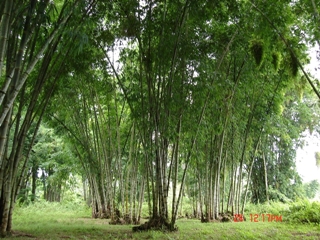Bamboo has gained attention as an alternative crop that has potential soil-trapping capability. The roots of giant bamboo (Dendrocalamus asper) can efficiently absorb excess water and bind the soil together, thus reducing erosion.
A project funded by the Philippine Council for Agriculture, Aquatic and Natural Resources Research and Development of the Department of Science and Technology (DOST-PCAARRD) and conducted by a team of researchers from Central Mindanao University (CMU) has shown that giant bamboo can cut soil losses, decrease water discharge, and lower sediment yield. These factors can help minimize soil erosion and landslides.

In Taganibong Watershed, soil erosion was measured every time it rains through the erosion bar method. In two years, data showed that giant bamboo cuts soil losses by 75% or 22.66 ton/ha per year compared with 90.12 ton/ha per year in open area. Displaced soil particles are lessened by 80%, while a river near a giant bamboo plantation decreased water discharge by 85%. Lastly, it was observed that sediment yield, a major cause of siltation and flooding in lowland areas, decreased to 2 tons/ha per year in a giant bamboo plantation compared to 50 tons/ha per year in an open area.
Bamboo foliage also helps in intercepting raindrops and minimizing the impact to the soil surface. Bamboo litters also shield the soil from the impact of raindrops as decomposed litter improves soil structure and promotes water entry by 40%. This further reduces surface flow, translating to minimized soil erosion and landslides.
